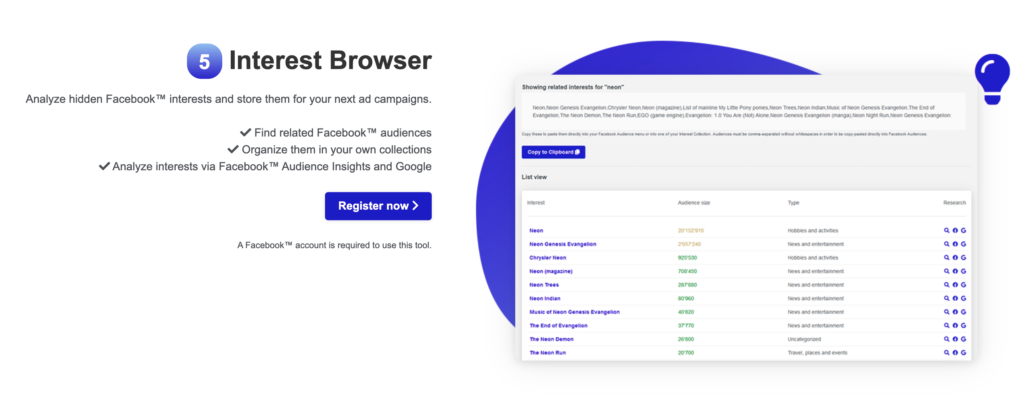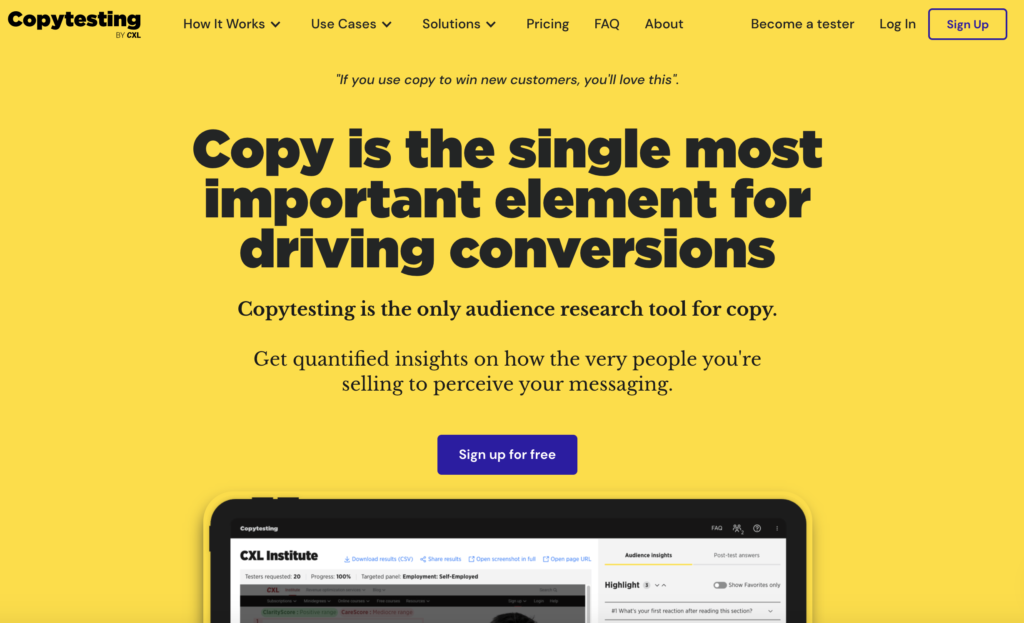In today’s digital world where plenty of tools and proven approaches exist to help you to quickly start a business, launch a product, or create a service, a few things still require your full attention and creativity. Even though you can automate many tasks, there is one that you should handcraft carefully because it has the potential for you to particularly stand out: great copy. Not often talked about, copywriting is a discipline that matters for every marketer, product manager, and entrepreneur. The impact of copywriting is actually huge.
If it is well done, it can significantly increase the value of your brand, the success of your marketing efforts, and the sales and retention rates of your products and services. So if you are in the middle of the process of launching a company, leveling up your writing skills can be one of the biggest differentiators for you to successfully position yourself in the market and create satisfying relationships with your customers in the long term. But also as an established business, it is never too late to improve your copy.
Don’t know where to start? Look no further, we’ve got you covered with this blog post.
Definition: What is copywriting?
First of all, even though this might seem trivial, but just to make sure that no one confuses this: copywriting has nothing to do with copyright.
There is not really one universal definition of “copywriting”, but this is the one we roll with:
“Copywriting is the ability and act of creating and using written text with the purpose to persuade someone to take a certain action.”
To make it even a bit more tangible: Copywriting is the language a business uses to engage (potential) customers and to communicate with them so they are satisfied over time.
Basically, copy can appear everywhere. This includes the text on a website and that of any digital product (i.e. all the words used in an app). It also applies to the writing on a physical product and its packaging. You’ll find the results of copywriting across any medium, may it be email newsletters, billboards, ads, or video and audio scripts. And, most importantly, from a social media marketing point of view: It is the fundament of your digital presence and posts across all social media channels. An Instagram post includes copy just like a LinkedIn company profile or a Facebook page.
Why does copywriting matter for your business?
As you can tell, there is basically no occasion when you get in touch with a business where there is no copy involved in one form or another. Essentially, without (good) copy, businesses can’t really communicate anything to customers at all.
And, this is exactly the point that we are trying to make: Do not underestimate the impact of copywriting on your business.
If you do not take it seriously, chances are high that customers won’t take you seriously. When you do it well, there is a good chance that your business will do well. Of course, copywriting is not the only ingredient that there is to a successful company – but it is one that still gets underestimated, even though its importance is growing.

The impact of copywriting
At first, copywriting can seem like being only a part of marketing that is not necessarily of major importance. But the more you dig, the more you realize how essential it is to a business and its activities. The language you use to communicate within your business and to speak to the outside world is intertwined with your product development just as it is with your Instagram posts and even job postings. After all, you also want to be appealing not just to customers but also to the best talents out there – don’t you?
In a world, that sees new digital products being launched every day, there are not that many options left of how you can stand out from the crowd. This is why leading product experts like David Okuniev, Co-Founder of Typeform, go as far and say that even “micro-copywriting” will become an increasingly important differentiator that influences if people love using your product or not. “Micro-copy” refers to small texts or only a few words, which can make a big difference. These can be part of a digital product (e.g. the call-to-action on a button within an app) or occur in other places.

Step up your copywriting game
Now that you understand the impact that copywriting has on your business, let’s focus on how to become better at it. In this regard, we first have to burst a bubble: Not all good writers are automatically good copywriters. But it is a skill that you can learn and improve over time.
To make it clear: Your job is not done by simply using some funny or fancy words the next time you create social ads or a new landing page. Your goal is to persuade, influence, and engage your audience.
It is about combining your creativity with a bit of science – because even the most creative copy is based on writing methods that have been tested and refined for decades. To get you started, here are some best practices:
-
Keep it simple and be consistent
@gerardo_perezApple > PC… change my mind ? ##business ##marketing ##branding ##design ##apple ##advertising ##tips ##tricks ##psychology ##ads♬ New Soul (Tik Tok Remix) – Yael Naim
As with so many things in business, copywriting is about simplicity. Even though there is a scientific angle behind all of this, forget about the academic writing style you learned in university. When writing copy, you have to think more like a minimalist. You know how the saying goes: Less is more. Be strict when editing your writing and strip every sentence down to its essence and clearest form. Be as concise as possible. Why? Because crisp and clear writing sells best.
Good copy is easily comprehensible, clearly communicates an idea, and creates the desire for a certain action in the mind of a reader. (Remember the movie “Inception”?)
What is also important is that you communicate in one voice across all social media channels and mediums. It is true that you need to adapt your copy to the platforms you are using depending on the respective best practices for them, but you should not appear as a different company on one platform than the other. So define your brand’s copywriting tone of voice first and then adapt only the form of your copy depending on what is needed to get the most out of a certain social media platform. (more on that below)
-
Master the art of writing headlines
No matter if you write a longer piece of content like a blog post or are trying to come up with a catchy phrase for your next banner ad, it is crucial that you are able to communicate with just a few words.
Learn how to convey a message in one sentence.

-
Always make it about the reader
Potential customers don’t necessarily care about your company’s history or the technical features of your product. So don’t bore them with too much info that is not really needed to make a sale. (Reminder: copywriting is about closing!)
When writing copy, you first and foremost need to make sure that it becomes clear that your business can solve your readers’ problems. Focus on the benefits you can deliver to them. Make the readers the centerpiece of your copy. What that would look like? Let’s use the neontools as an example:
- Get meaningful data about Instagram hashtags
- Find the most relevant influencers for your business
- Target hidden interests and get an advantage over your competitors

-
Skimmable copy is good copy
In today’s fast-paced world, it is all about efficiency and instant gratification. So why scare readers away with huge blocks of text? Write your copy in a way that makes it easy for them to go through the provided information.
When you put out longer-form content, have subsections, use bullet points, emojis, etc. Give readers the chance to quickly jump from the headline to the part that they are most interested in to ultimately help fulfill their needs. If they find what they were looking for, chances are high that they will also read the rest of the content.
Let’s take this blog post as an example: Did you quickly find what you were looking for?
-
Create a strong call-to-action
Remember our definition of copywriting? Again, the whole purpose of all this is to use written text to persuade someone to take a certain action.
In its simplest form, you do that by having a clear CTA (call-to-action). Writing such is all about precision. You name the thing you want your audience to do, like subscribing to a newsletter, following your Instagram account, or purchasing a specific product.
Being able to create compelling CTAs is definitely one of the skills that best exemplifies the value of great copywriting.
Learn how to do it now!
-
Each platform has its own rules
Depending on the platforms that you’re publishing on, you should always try to follow their respective best practices when it comes to social media.
For example, writing something on Twitter requires a different approach than writing (more formally) for LinkedIn. Just think about it: You usually talk differently to your friends than to your employer. Consider applying the same mindset to your copy and the objective you want to accomplish with it.
So here are a few best practices that you should follow…
- Facebook: 3-10 lines of text per Post. Keep your hyperlinks above the “read more” fold. Use emojis. Hashtags actually have no obvious advantage.
- Instagram: Medium-sized texts are OK. Links need to go into your bio (pro tip: use neon.link). Use emojis and hashtags.
- Twitter: Keep it simple, but interesting. In case you need to post more text, use the “Add another tweet” button (and create a so-called “Twitter thread”). Don’t use too many emojis. Use a maximum of 2-3 hashtags.
- LinkedIn: Long texts are OK. Keep your hyperlinks above the “read more” fold. Depending on your niche, you can add some emojis and fun to your texts. Use a maximum of 2-3 hashtags.
Another important piece of advice: When posting social media ads, do split-testing to find out which copy performs best. Don’t place all your copy eggs in one basket.

Useful tools
After all, good copywriting has a lot to do with using some proven methods, honing your writing skills over time, and leveraging your genuine creativity. It also does have a lot to do with gut feeling and personal opinion.
But as we live in the information age where “data is the new oil”, that is not solely sufficient anymore. This post would not be complete if we did not also check for tools that bring data into the mix. The goal here is to make the impact of copywriting on your business measurable. So check out the following tools when you are trying to improve your copy to turn scrolling users into buying customers.
-
Copytesting
One tool we came across in this regard is Copytesting. Just like testing an app with beta users, audience testing can also be really helpful when working on your copy. The description of this nifty tool on Product Hunt goes as follows:
“Copytesting is an audience research tool focused on website copy. It tells you what your target audience thinks of your website copy, gives you quantified data on where your copy falls short, and why. So you could fix it, and improve your conversion rate.”

-
Gramara
Another copywriting tool that caught our interest is Gramara. If English is not your native language, it can be particularly useful as it was built for exactly that use case. Gramara uses NLP (natural language processing) and AI to increase the fluency and clarity of your writing. It will catch not only errors but also intuitively draw conclusions on what you meant to say to suggest the right corrections. If your English is already pretty good, you can use the tool to generate paraphrases in alternative writing styles. Test and see what works for your audience, and you’ll be another step closer to great copy. Pretty cool, huh?

-
Grammarly
If you are looking for a first step to improve your writing, you can also get started with Grammarly. It can help to make your overall writing better, thus also your copywriting. What’s intriguing about it is that you can leverage the tool to check your texts depending on the tone of voice that you want to achieve. For example, it will then suggest alternative words that are better suited for the style you are aiming for. However, we would not go as far as to say that Grammarly is an actual “copywriting tool”. But it can be helpful to get started when tackling your copy.

Great examples
Since a picture says more than a thousand words, we want to show you some real-life examples of good copywriting. Hence, we highly recommend to check out the following links:
- 10 World-Class Copywriting Examples
- 4 Social Media Copywriting Tips From Grammarly (With Examples)
- Book: “Ogilvy on Advertising”
- The Gary Habert Letter
Bringing it all together
To sum it up: The language you use as a business can be very powerful (in a positive or a negative way). The impact of copywriting is tremendous. That is why you must treat your written word like a precious resource by really thinking through how you use it well. Turning a profit has a lot to do with the copy that you put out in this world. Even just a few copywriting tweaks on your landing page can already increase your conversion rate. That means you can make more revenue without having to spend more money at the top of your funnel. So it makes sense to actually invest in great copywriting first. Because every word matters.






